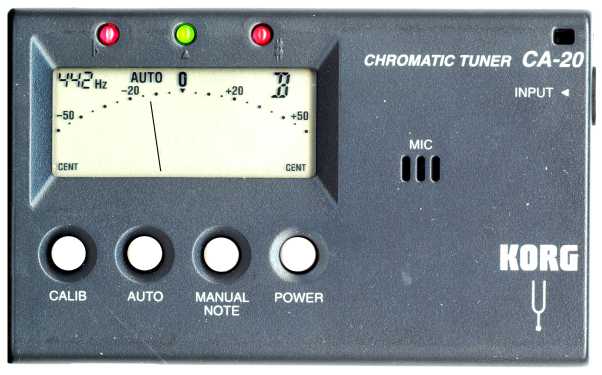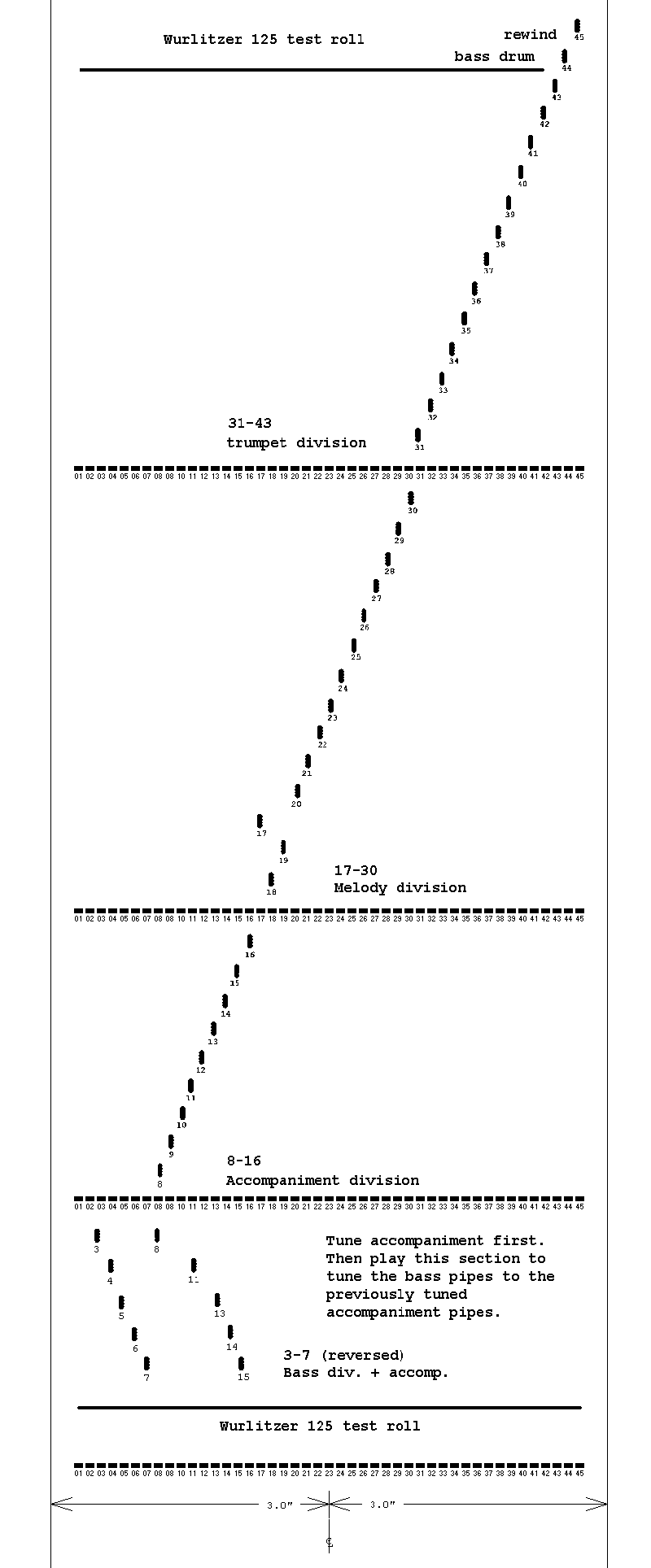W125 test roll
Test Roll & Tuning
Wurlitzer Style 125 Band Organ
compiled by Robbie Rhodes
INSTRUCTIONS FOR TUNING
WURLITZER BAND ORGANS
Style 125
For your convenience, place the instrument on two blocks
about 18" high, supporting the sides of the case, so that you can see the
pipes contained in the bottom of the instrument from below.
The instrument contains 22 stopped pipes in the bottom,
and six stopped and one open pipe, A-flat, and also 28 open (Violin Pipes)
in the main case. In the front there are 13 Flageolets, 13 Brass Trumpets,
13 Brass Piccolos, and five wooden Trombones. There are stops for the Trumpets,
Flageolets, and Piccolos, also one stop in the main case for the open Violin
Pipes. The latter stop should always remain open.
Before tuning, close all the stopped pipes in the bottom
and main case. also close A-flat and the six stopped pipes on the left
inner side when standing behind the instrument, with some soft paper, just
tight enough so that the pipes will not speak, but that the air will pass
through the pipes. Also close Trombones, Trumpets, Flageolets and Brass
Piccolos, by pulling the respective stops. Place the tuning roll on the
tracker frame and connect the paper with the take-up spool. Push the Stop
Lever to the right, press the Rewind Pneumatic to the right a trifle, and
pull the hook down over the screw. The tuning roll can now be moved back
and forward over the tracker bar from one perforation to the other.
Start the instrument and tune the open pipes in the main
case. Tune the Fifths a little flat and the Fourths a little sharp (Temperature).
When this has been finished, continue moving the tuning sheet, and tune
the open pipes in octaves in the succession as they will sound. When all
the open pipes have been tuned, open the stopped pipes in the bottom, and
then those in the main case, and then tune them to corresponding open pipes.
Then proceed in the same way with the Flageolets, Brass Piccolos, Trumpets
and Trombones as the tuning sheet will indicate. Test all the pipes and
see that the instruments speak properly. If they do not sound clear, it
may be caused by dust or some little dirt accumulated in the pipes, which
should be cleaned with a feather or some thing similar. |
Reproduced from original Wurlitzer pamphlet
courtesy Dana Johnson

The reference pitch was set to A=442 using the calibrate button.
The display shows note B at -13 cents (flat). The octave is not
determined.
Dana Johnson says the organs he has worked on typically sounded about
one whole step higher than the Wurlitzer documents say it is. Therefore
I call it a "transposing instrument", just as saxophones are transposing
instruments.
Band organ technicians recommend that the organ not be tuned to concert
pitch (A=400 Hz) but to tune it to itself, such that the tempermental reed
pipes speak reliably and play well.
This is my suggested steps for tuning the organ.
Tools and supplies:
- paper tracker bar scale
- electronic tuner with microphone which displays the pitch of
the note it hears, e.g., Korg Chromatic Tuner CA-20
- tools to adjust the pitch of the organ pipes
- hearing protection
1. Make the paper tracker bar scale:
a. Make a simple tracker bar scale of a strip of heavy paper,
about 1 inch high and slightly wider tha 6 inches.
b. Mark the tracker bar channel holes. This can be a pencil
rubbing.
c. Number the channel holes 1 through 45 beginning at the left
(bass) edge.
d. Mark the channel numbers on the Wur 125 test roll using the
paper scale and the tracker bar channel assignments data in the Wurlitzer
125 Specification.
2. Make a list of the frequencies (pitches) actually played by
the pipes. Play the test roll slowly.
a. Temporarily cover all but the tracker bar bass channels (expose
holes 3,4,5,6,7).
b. Play the "bass notes test" section of the test roll very slowly
and write down what the electronic tuner says. Be sure note record
the tuner reference frequency displayed at the upper left. For example:
ref. A=440 Hz.
hole / display
3 A -11
4 D -13
5 E -08
6 F# -15
7 G - 17

27 March 2003
|
 Tech
Tech
 Wur125
Wur125
 w125testRoll
w125testRoll

